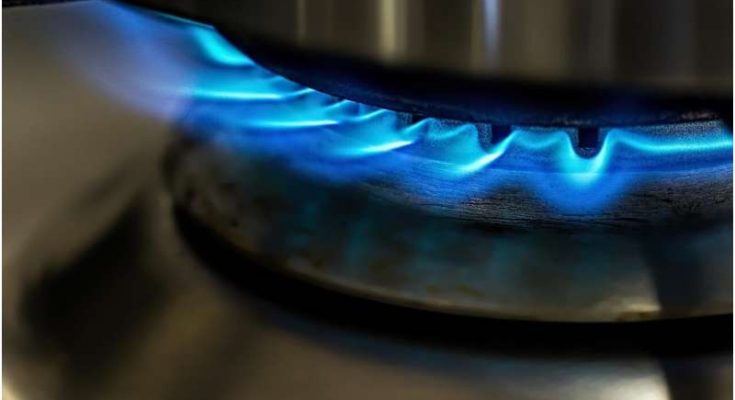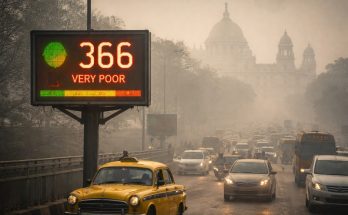Every day, millions of Americans rely on natural gas to power appliances such as kitchen stoves, furnaces, and water heaters, but until now very little data existed on the chemical makeup of the gas once it reaches consumers.
A new study finds that natural gas used in homes throughout the Greater Boston area contains varying levels of volatile organic chemicals that when leaked are known to be toxic, linked to cancer, and can form secondary health-damaging pollutants such as particulate matter and ozone. The research by the Center for Climate, Health, and the Global Environment at Harvard T.H. Chan School of Public Health, PSE Healthy Energy, Atmospheric and Environmental Research (AER), Gas Safety Inc., Boston University, and Home Energy Efficiency Team (HEET) was published in Environmental Science & Technology.
“It is well-established that natural gas is a major source of methane that’s driving climate change,” said Drew Michanowicz, Visiting Scientist at Harvard Chan C-CHANGE and Senior Scientist at PSE Healthy Energy. “But most people haven’t really considered that our homes are where the pipeline ends and that when natural gas leaks it can contain health-damaging air pollutants in addition to climate pollutants.”
Researchers conducted a hazard identification study, which evaluated whether air pollutants are present in unburned natural gas, but did not evaluate human exposure to those pollutants. Between December 2019 and May 2021, researchers collected over 200 unburned natural gas samples from 69 unique kitchen stoves and built pipelines across Greater Boston. From these samples, researchers detected 296 unique chemical compounds, 21 of which are federally designated as hazardous air pollutants. They also measured the concentration of odorants in consumer-grade natural gas—the chemicals that give gas its characteristic smell—and found that leaks containing about 20 parts per million methane may not have enough odorant for people to detect them. The samples were taken from the territories of Eversource Gas, National Grid, and the former Columbia Gas, who together provide service to 93% of Massachusetts gas customers.
Key findings:
- Consumer-grade natural gas supplied to Massachusetts contains varying levels of at least 21 different hazardous air pollutants, as defined by the U.S. EPA, including benzene, toluene, ethylbenzene, xylene, and hexane.
- Concentrations of hazardous air pollutants in natural gas varied depending on location and time of year, with the highest concentrations found in the winter.
- Based on odorant concentrations, small leaks can be undetectable by smell—leaks up to 10 times naturally occurring levels may be undetectable, equating to a methane concentration of about 20 parts per million.
When gas leaks occur, even small amounts of hazardous air pollutants could impact indoor air quality because natural gas is used by appliances in close proximity to people. Persistent outdoor gas leaks located throughout the distribution system may also degrade outdoor air quality as precursors to particulate matter and ozone.
“This study shows that gas appliances like stoves and ovens can be a source of hazardous chemicals in our homes even when we’re not using them. These same chemicals are also likely to be present in leaking gas distribution systems in cities and up the supply chain,” said Jonathan Buonocore, co-author and Research Scientist at Harvard Chan C-CHANGE. “Policymakers and utilities can better educate consumers about how natural gas is distributed to homes and the potential health risks of leaking gas appliances and leaking gas pipes under streets, and make alternatives more accessible.”
The researchers share actions that policymakers and individuals can take to mitigate health risks posed by natural gas used in homes.
Policy Actions:
- Gas pipeline companies could be required to measure and report more detailed information on the composition of natural gas, specifically differentiating non-methane volatile organic compounds such as benzene and toluene.
- Gas utility providers could be required to routinely measure and report natural gas odorant content to customers similar to informational postings often produced by interstate gas pipeline companies.
- State regulations could require direct measurement of leaked, unburned natural gas in ambient air to be included in emissions inventories and to better determine public health risks.
- The Consumer Product Safety Commission has the authority to set performance standards for gas stoves and ventilation hoods to limit air pollutant emissions.
- Home inspectors and contractors could be required to perform natural gas-appliance leak detection surveys or to measure for ppm-range methane, similar to radon tests done prior to the completion of a real estate transaction.
- Given the importance of odorants in detecting gas leaks, federal natural gas odorization regulations could be updated so that natural gas is odorized to meet much lower detection levels than the current 1/5th the lower explosion limit (detectable at ~1% methane).
Individual Actions:
- Because small leaks may evade our sense of smell, getting an in-home natural gas leak detection survey performed by a licensed plumber or heating, ventilation, and air conditioning (HVAC) contractor can verify that no small leaks are present.
- Increasing ventilation is one of the most accessible and important actions to reduce sources of indoor pollution. Opening windows and turning on a vent that exhausts to the outside when cooking are simple steps that can lower the risk of indoor exposure.
- If you smell gas, exit the building and then immediately call your gas company to assess whether there is a leak in or nearby your home.
#NaturalGasInHomes; #AirPollutants





